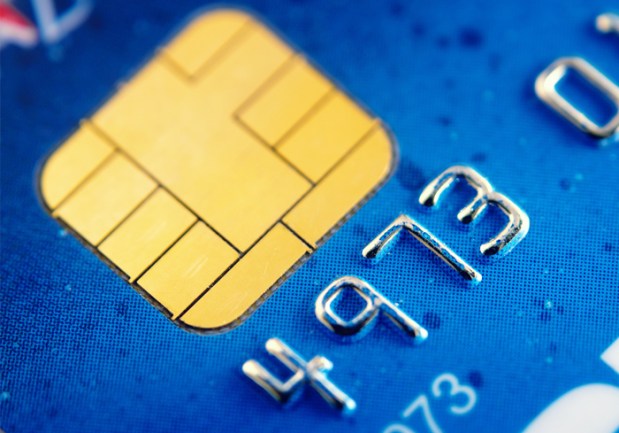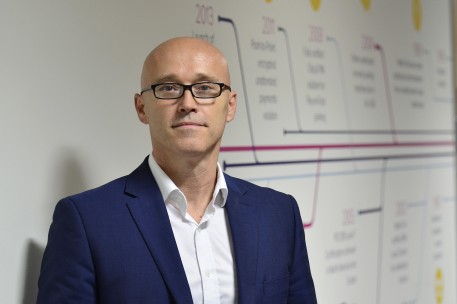Meet The New Kids On The (US EMV) Block

When it comes to EMV, some say that the U.S. is late to the party. Others say that EMV doesn’t really solve much of the big security problem in payments, especially when it comes to the online and mobile sectors. In a recent interview, MPD CEO Karen Webster sat down with Lars Pederson, CEO of Creditcall, a gateway that enables payments across any channel and offers an EMV solution that accelerates the time it takes for merchants to become EMV compliant. Pederson talks his new strategy in marching the U.S. forward in the EMV migration, and why he thinks the technology is crucial to the future of payments and mobile payments as a whole.
KW: I know you’re fairly new to the CEO role – it’s certainly one that you’ve taken on at a critical point in time as the U.S. prepares to march forward in the direction of EMV compliance. So here’s my first question: Some say the U.S. is very late to the EMV party, and others say that EMV doesn’t really solve the big security problem in payments. What’s your view?
LP: The U.S. is later than parts of the rest of the world, and if you look at what happened when the U.K. rolled out EMV, it had a substantial impact on fraud, causing it to decrease by more than 30 percent. Clearly it has had an impact. At the same time, fraud in the U.S. has been climbing – and there’s been a shift in fraud from Europe to the U.S. after Europe deployed EMV.
I do anticipate, as it is being rolled out in the U.S., that it will decrease fraud significantly, mainly for card-present transactions. EMV is the right technology – at this point in time, it’s a very mature technology. Any technology that you put in place has to reach a level of maturity, and it’s only as strong as its own network effects. And, clearly the network is in favor of something that is deployable on a global scale.
If you look at some of the newer technologies like Apple Pay – it’s a very clever technology especially with how it incorporates tokenization, which is not a new idea in any sense. And it can be deployed in an online contact should they decide to do so, which could make it a really good solution. But it really all comes down to the network effects – if it’s not widely deployed, it’s only as secure as the weakest part of the link.
EMV is the right thing for the U.S., and for the world.
KW: I was talking to someone not long ago who said that one of the biggest regrets that he had was having his company focus too much on fraud message as an inducement for merchants in the U.S. to embrace EMV. Even though there have been POS compromises in the last year, those are not things that EMV would have prevented.
But as you pointed out, there are a number of other benefits to EMV technology, some of those include enabling clever schemes like tokenization and Apple Pay. I’m curious, looking back, if having more of a focus on some of the other dimensions might have been a more persuasive sales pitch for the U.S.
LP: I definitely agree with that. I also think there’s no one silver bullet solution to a complex problem like fraud. Nevertheless, there has to be a combination of solutions deployed. Even in the fraud context, EMV is not really doing anything in terms of online transactions – if card data is stolen, it doesn’t help anything. But the good thing with EMV of course is that as you plug in the card each time, it will change the codes and so on that are being transpired.
KW: Let’s get back to some of the things that you’re focused on as CEO. You’ve been in the role for a short time – what is in your 100-day plan and why?
LP: There are really three pieces to it. I’ve spent my entire career in technology. So my 100-day plan is quite simple – the first point is accelerated learning, part of what we’re doing now. Talking to people who have in-depth knowledge about the industry, and talking to board members to investors to customers to suppliers, and more.
The second point is to launch a strategy process. As you pointed out, it’s a very pivotal time in the industry. Of course, it’s difficult to anticipate what the world will look like in 12 months’ time. But in an industry that’s so dynamic, it’s critical that you as a company have ongoing strategy processes.
The third point is really all about the U.S. EMV offers Creditcall a big opportunity, where we have some unique technologies that we can use to enable companies to migrate to EMV much faster than they would have. In that context, it’s paramount that we ready ourselves to best service new customers as they come on board.
KW: So you mentioned that you’ve been in this accelerated learning process. Certainly software and wireless are fundamental to the evolution and innovation of payments. But payments is a complicated sector – what have you learned that’s surprised you the most about it?
LP: Well, I’ve had a few “oddball” observations. Coming from telecom and wireless where there’s an ongoing forklifting of technologies every five years or so when new generations come on board, it’s an environment that moves at a high pace. Comparing that to payments, the similarity is that it’s also very regulated but at the same time has not developing at the same pace as telecom for many years. Now, as many new ideas and innovations come to the forefront and new business models are being deployed, it is almost at the same pace.
At the same time, because of this long period of not a lot of change, there are a lot of presentations that talk about history – what has happened and what will happen.
KW: It is an interesting ecosystem that has so many interdependencies, and I think that’s what makes the pace of change so challenging for new players. You have this regulated environment, a lot of innovation and a lot of it being brought about by mobile. But understanding how the industry has evolved and what’s kept it from moving faster and igniting is helpful in figuring out how to break through. It requires everyone to move together at the same time.
LP: Yes, and I think we’re coming to an inflection point where it’s happening at the same time.
KW: Yes, I agree. So another question for you, from the CEO perspective, what keeps you up at night? What are you worried about?
LP: As a business, Creditcall is doing very well. I have no particular reason to worry seriously about anything we do – it’s always been quite strong. It’s not so much about the company but how we operate. I’m about to take the company on a new journey and continue the growth of the company. I talked about the U.S. market before and trying to leverage that, and in doing that, I have to do it in such a way that we continue to have a high customer satisfaction. There are key things we need to be careful about in terms of our platform and having a high level of availability when processing payments – PCI compliance is a given but there are many things we cannot get wrong as we grow the company.
Then looking at the market from an external perspective, I see many more opportunities than I see things that worry me. There are so many things you can do and address with new technologies. We’re just about to launch the strategy process I mentioned, and it’s the first time in my career where the list of potential choices is as long as it is.
KW: So what’s keeping you up at night is thinking about all of the opportunity that you can take advantage of. There are a lot of things that we’ve talked about that will dominate the conversation in payments over the next year. Of that long list of things that excite you, what are some of the things that will most define our direction in the year 2015?
LP: At a high level, I think it’s really about figuring out where the value is. What I mean by that is that there are so many new technologies that are emerging, and many different reasons why they should become successful. Normally we talk about a balanced triangle between cost, security and convenience in any sort of new IT solution.
My personal opinion is that the main driver for new technologies will be on the revenue side for the merchants. I believe that the winning solutions will be the ones that have the right balance in terms of integration of data and the use of it to increase revenue. I’m talking about some of the movements within omnichannel, and some of the ways we use customer analytics to engage them in a new way, and more.
So I think there has to be an integrated approach and each of the merchants needs to have sufficient customized offerings and customer engagement to enable them to increase their revenue. If that’s not the driver then I don’t think mobile payments will be successful.
KW: I agree. Merchants will adopt things that they believe their customers want to use in their stores to help improve their relationship with the customer and drive more revenue. That will ultimately be what changes the dynamic in the retail environment and get consumers and merchants in lockstep together around these mobile alternatives.
LP: Absolutely.

Lars Pederson
CEO, Creditcall
Lars joined Creditcall as CEO in 2014 and is responsible for the company’s global initiatives, continued growth in the U.S. and reinforcing its mission to serve as the Heart of Payments. He’s led and grown technology companies around the world, from California to Copenhagen, and is a proud father of four.
To listen to the full podcast, click here.
